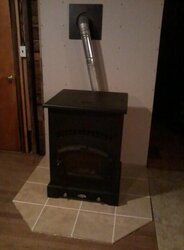All of this talk about Nor'easters, floods, people without power for weeks and such has prompted me to get the battery backup cable for my Mt. Vernon.
Now I know its as simple as positive to positive, negative to negative, plug into stove.
However, I have some other questions that I hope some could help with....
What's a decent size battery to buy?? What would be the appropriate charger? Do I wait until I need a battery to buy since until then it will be just sitting around loosing its charge, or do I get a trickle charger and keep it plugged in all the time?
What if I wanted to do two batteries? How would I hook those up?
(see, I AM a battery backup dummy)
JS
Now I know its as simple as positive to positive, negative to negative, plug into stove.
However, I have some other questions that I hope some could help with....
What's a decent size battery to buy?? What would be the appropriate charger? Do I wait until I need a battery to buy since until then it will be just sitting around loosing its charge, or do I get a trickle charger and keep it plugged in all the time?
What if I wanted to do two batteries? How would I hook those up?
(see, I AM a battery backup dummy)
JS



